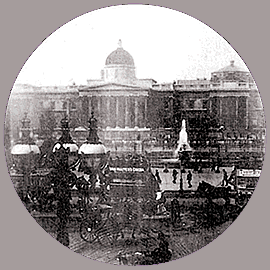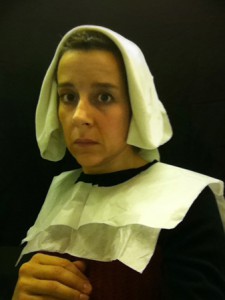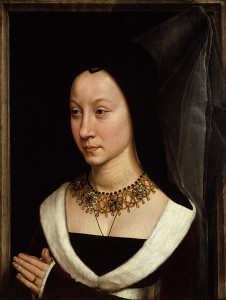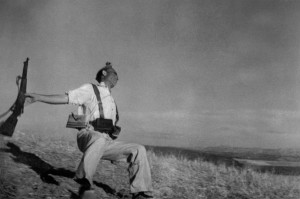Dr. Rudolph, I have enjoyed your articles about photography and psychology! I’m wondering if you could answer a question for me? I am doing a speech in my public speaking class about why we should hire a professional photographer for weddings and special events. I’m a professional photographer myself and want to convey to the audience the impact a photograph can have on us mentally as we look back on it over time. Is it healthy to look back at photographs, and what type of psychological effects occur as we gaze at old memories found in a photo? ~ Billy F.
Well, for starters, Billy, even professional photographers don’t always ‘get it right’. Some staid, lifeless, and utterly boring photographs can pop out of a PRO’s camera if the PRO comes to the event with the wrong attitude.
Attitude is everything, in every aspect of life from loving someone to doing an exceptional job at work.
A person with a soulful sense of self will convey that soulfulness in his or her photographs. It behooves the bride and groom, then, to select carefully; to select not just a person with a professional camera, but a person who comes highly recommended for the LIFE that they bring to their images. This is not that easy to come by.
I have known many a wedding photographer whose exposures were all right-on, where the bride’s dress was white white white like it was supposed to be; and whose technical expertise with the camera was rock solid. But the results, never-the-less, were B-O-R-I-N-G because the photographer lacked a sense of spontaneity as person, and therefore they couldn’t inject spontaneity into their images if their life depended on it.
The impact can go both ways
That said, you are absolutely right about the impact a photograph can have on us over time. But that can go both ways, as you know.
When a bride and groom enter marriage they are typically loving and focused on each other, and it shows in good photographs of them at that stage in their life. Should one of the spouses die prematurely, that soulful photograph of themselves at a lovely moment in time will comfort the survivor; and it will greatly enrich the remainder of their trek through life.
Should the couple later divorce, that same soulful photograph may serve, instead, as a painful reminder of the rocky road that their twosome traveled. The better the photograph, the more painful the reminder. (That’s probably when most folks wish for bad photographs instead, right?)
A good photograph tells a story. It engages us. It evokes powerful memories as deep, abiding emotional currents stir in us. It reflects like a mirror reflects when we look into it – and even though the road traveled since then might turn out to be problematic for us, it at least tells us important things about how we were back then, and about how we viewed the world at that stage in our development.
A poor choice in a spouse reflects, at the very least, relationship immaturity. A good choice in a spouse reflects a larger sense of self and a certain maturity about one’s own expectations in life. And if we were in our mid-twenties at the time of that choice-making, it serves as a tell-tale sign of what is to come – whether we were ready for it at the time or not.
A good photograph at a wedding
A good photograph at a wedding won’t just focus on the bridal pair; it will include as many of the couple’s significant others as possible, in subgroupings, certainly. But too many images fail to do this. The couple itself is an almost exclusive focus by wedding photographers, save for those with a more photojournalisticapproach.
A wedding is a family affair – it is an affirmation of family if ever there was one. When three or four generations of family are embraced in a single shot, there will always be positive vibrations by viewers for decades to come. That is because the photograph forces us to look more broadly and to see our family multigenerationally at a finite moment in time, which is a wonderful thing.
But this is hardly a ‘catch as you can’ kind of photo. It was deliberately posed by a professional with all the right sensibilities, who saw their job as one of freezing those precious moments in time. This is in contrast to the professional who saw their job as a three-to-four hour revenue producer.
A good ‘people’ photographer, therefore, brings certain important things to the table: he or she has to enjoy people; they have to have a sense of humor and sense of immediacy and touch; and they have an ability to make friends easily. This isn’t something they learn – these are qualities that they bring with them.
When armed with these qualities and professional training and experience, they make all the difference when memories are evoked.
A powerful link to the past
It is no accident that many soldiers carry photographs of loved ones into war with them, and they experience a certain overwhelming sense of comfort, even at the moment of death, to have that photograph in hand. Photographs, therefore, can and do serve as replacements for lost loved ones, and in that capacity they are hugely powerful in their impact.
So, too, with the elderly person who enters a retirement or assisted living environment. You can tell a lot about them by the number and types of photographs that they have around them in their new surroundings. This is no small indicator of the quality of relationships that they have had over the course of a lifetime.
One of the best things a visitor to such an environment can do is to bring old family photographs with them, and share them with the now-institutionalized person. Talk with them about the photograph, and about the persons in the photographs, and share your own personal remembrances with them. The photograph serves as a powerful link to the past for them, without which the past seems remote and no longer accessible.
They, in turn, become more distant and inaccessible themselves.
http://drellenr.wordpress.com/2009/04/14/the-impact-of-a-photograph-over-time/











